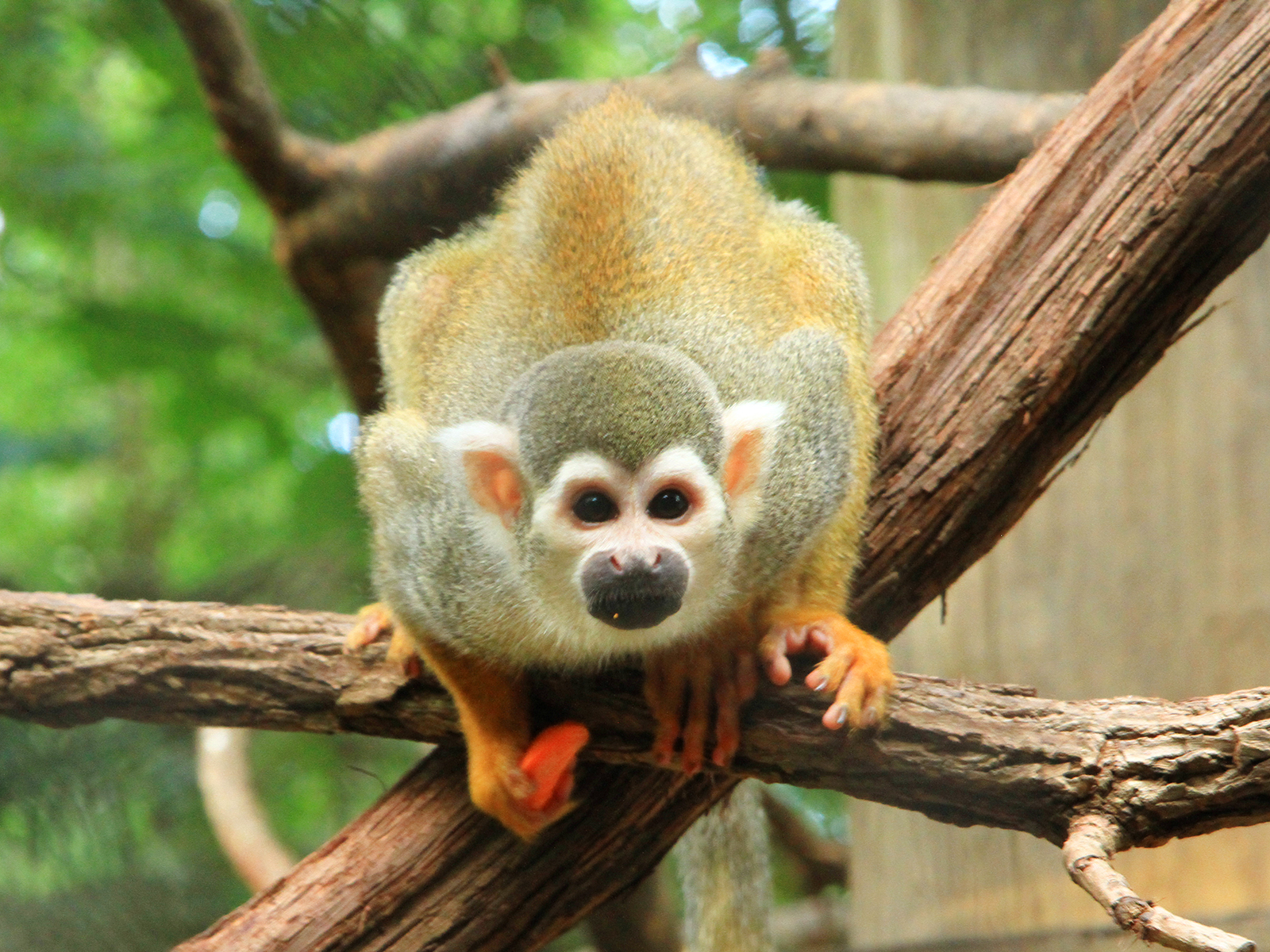Squirrel Monkey
Saimiri sciureus
Class
Mammalia
Order
Primates
Family
Cebidae
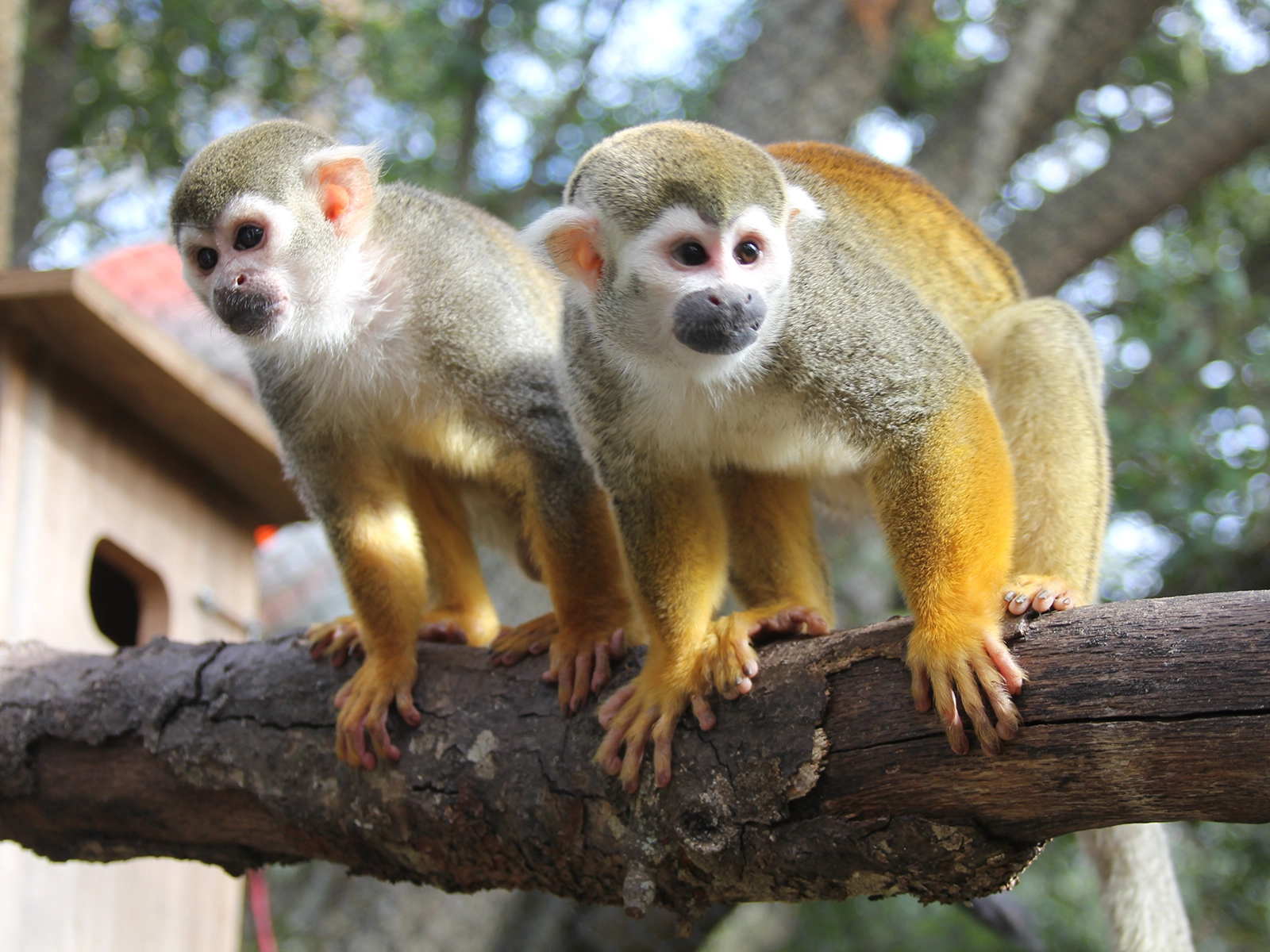
Mammalia
Primates
Cebidae
Guyana, Suriname, French Guiana, Brazil, Colombia, Ecuador, Peru, Bolivia, Venezuela
Body Length: 10.25 - 14.25 in
Tail Length: 14 - 17 in
Weight: 0.66 - 2.2.5 lbs
Tropical rainforest, tropical dry forest
1, Gestation: 160 -170 days
Insects, berries, fruits, snails, vegetation, birds, eggs
Least Concern
Their brain to body mass ratio of 1-to-17. (Humans have a 1-to-35 ratio.)
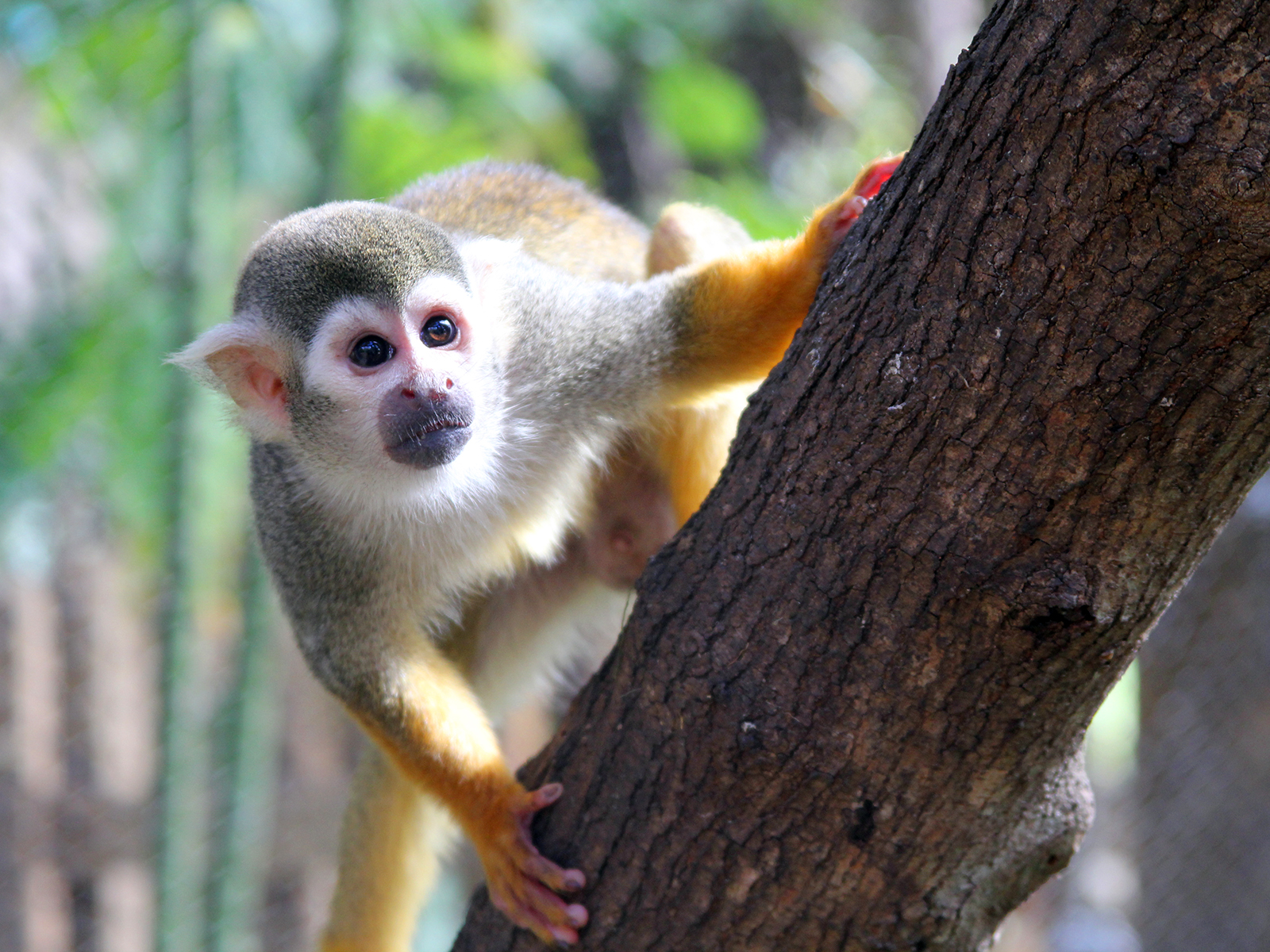
Squirrel monkeys live in large groups, subdivided into adult male bands, mother-and-infant bands, and juveniles, except during the mating season. The are active during the day and rarely decend to the ground.
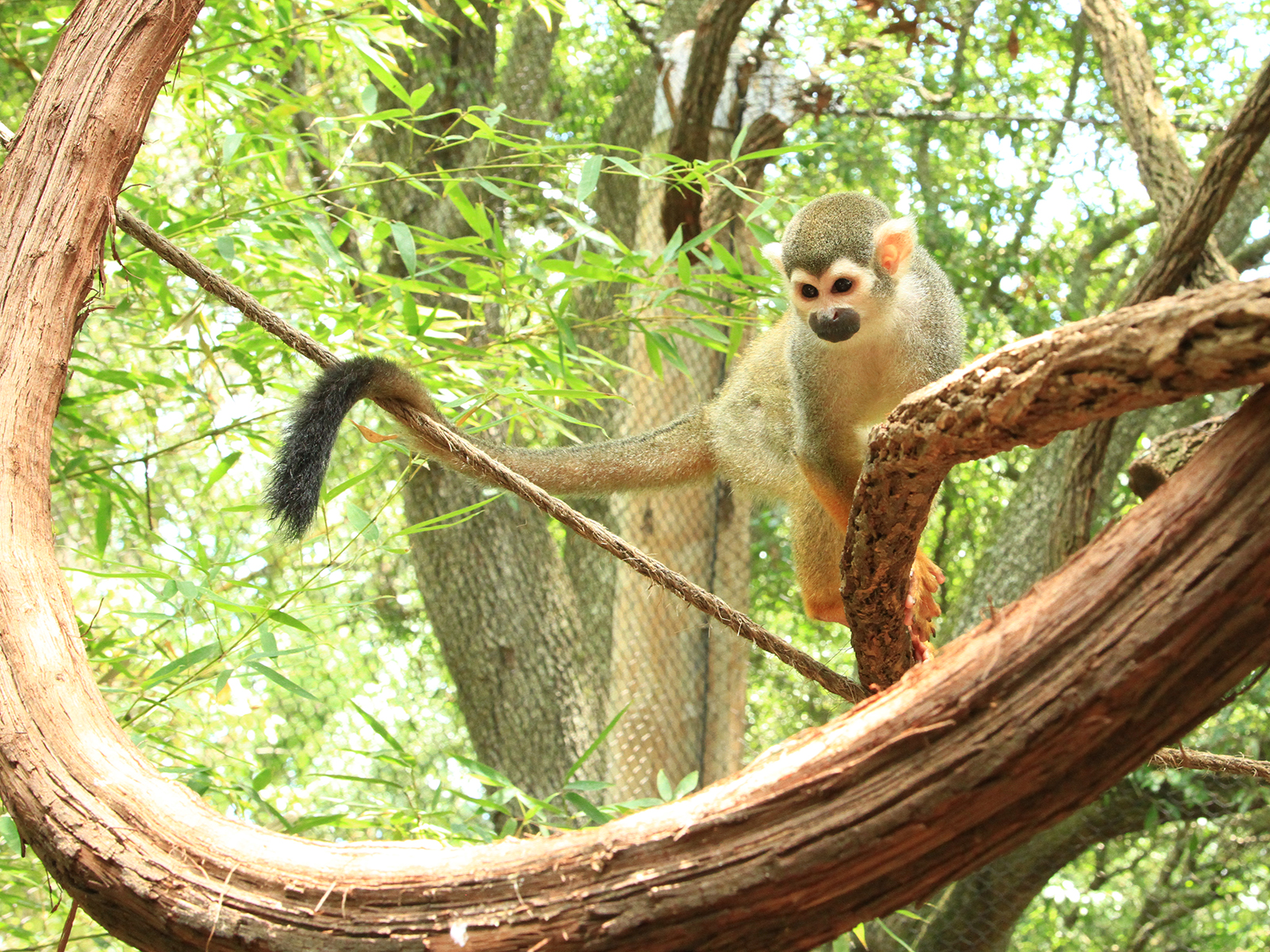
Their tail is not prehensile, but used for balance when traveling and feeding. They are excellent climbers and leapers and can travel long distances through the forest running along and leaping between branches.
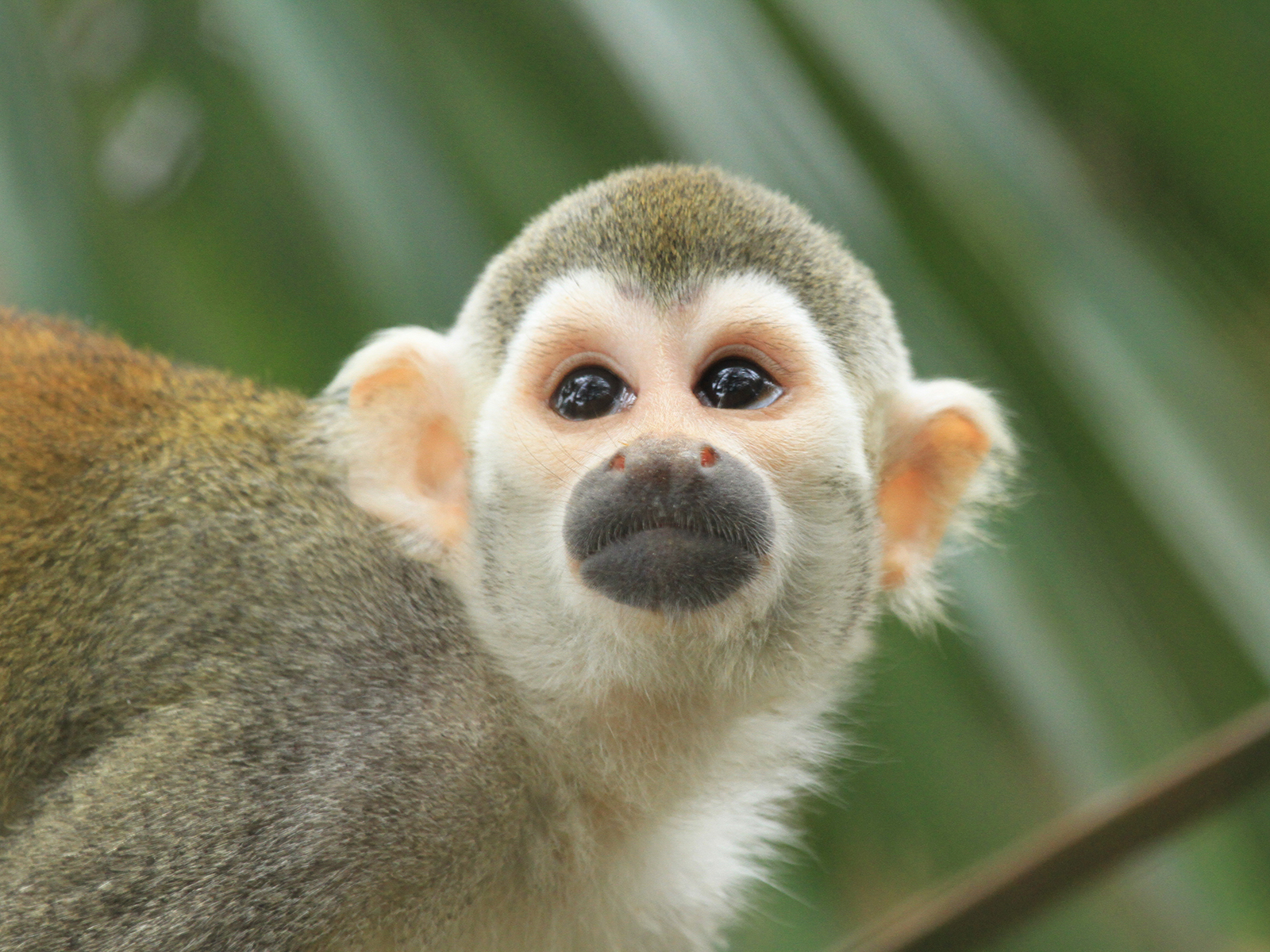
Males double their body size during breeding season. Squirrel monkeys mate between September and November.
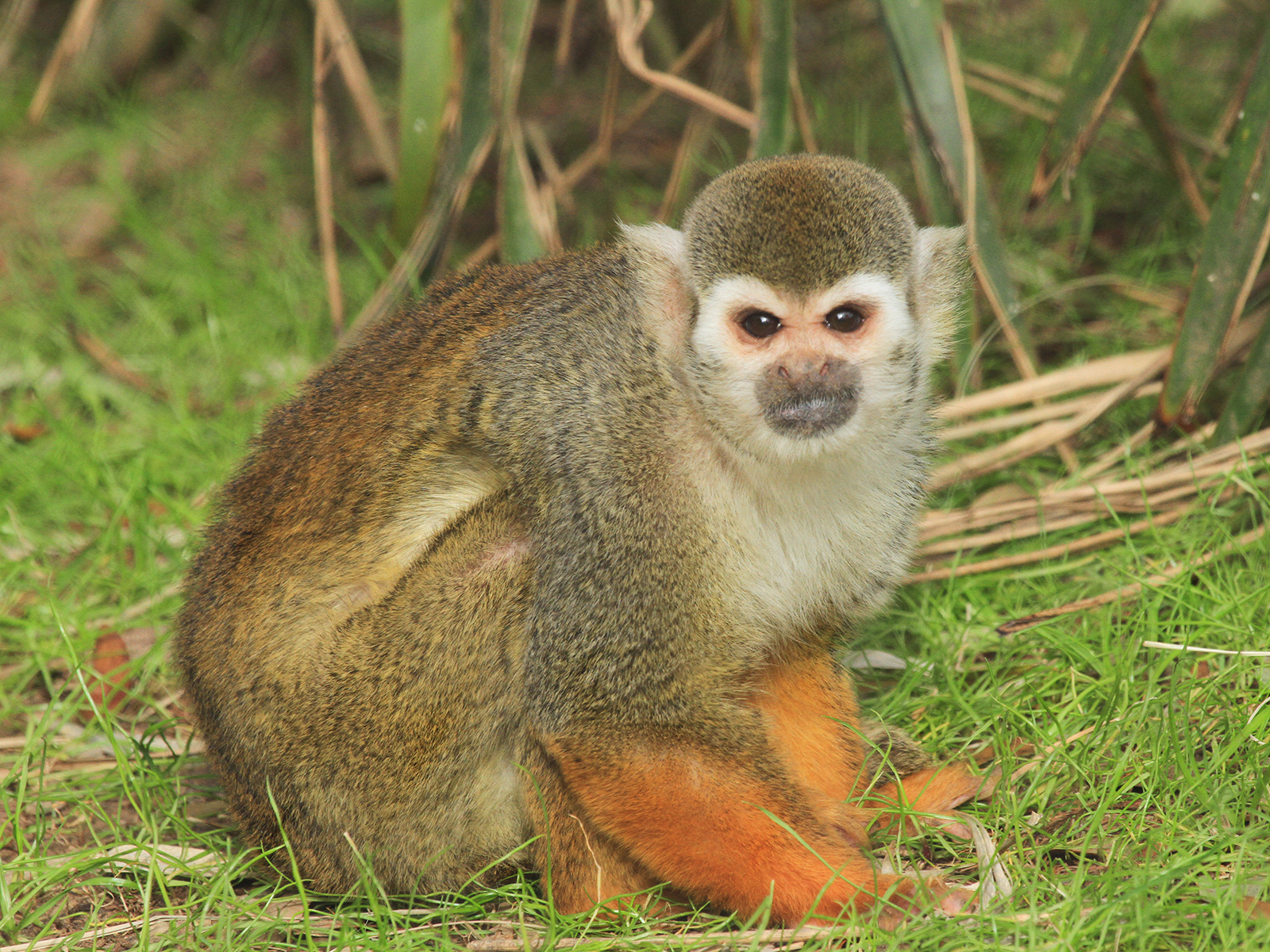
The biggest threat to all squirrel monkeys is the loss and fragmentation of their rainforest habitat in Central and South America. This is primarily caused by deforestation for agriculture, logging, and urbanization.
Squirrel monkeys, due to their small size and "cute" appearance, are popular in the illegal pet trade.
Make sustainable consumer choices. Look for products that are certified "rainforest-friendly" by organizations like the Rainforest Alliance, Forest Stewardship Council (FSC), or other similar programs. This applies to products like coffee, chocolate, wood, and palm oil.
Combat the Illegal Pet Trade. Never buy a squirrel monkey or any other wild animal as a pet. Demand for these animals directly fuels the illegal trade. Don't "like" or share social media content that promotes primates as pets as this raises awareness and normalizes the illegal trade.
Support ecotourism. If you are traveling to a country where squirrel monkeys live, choose tour operators who are dedicated to ethical wildlife viewing and who contribute to local conservation efforts.
John Born Aug 16, 2002
Jeebes Born July 27, 2004
